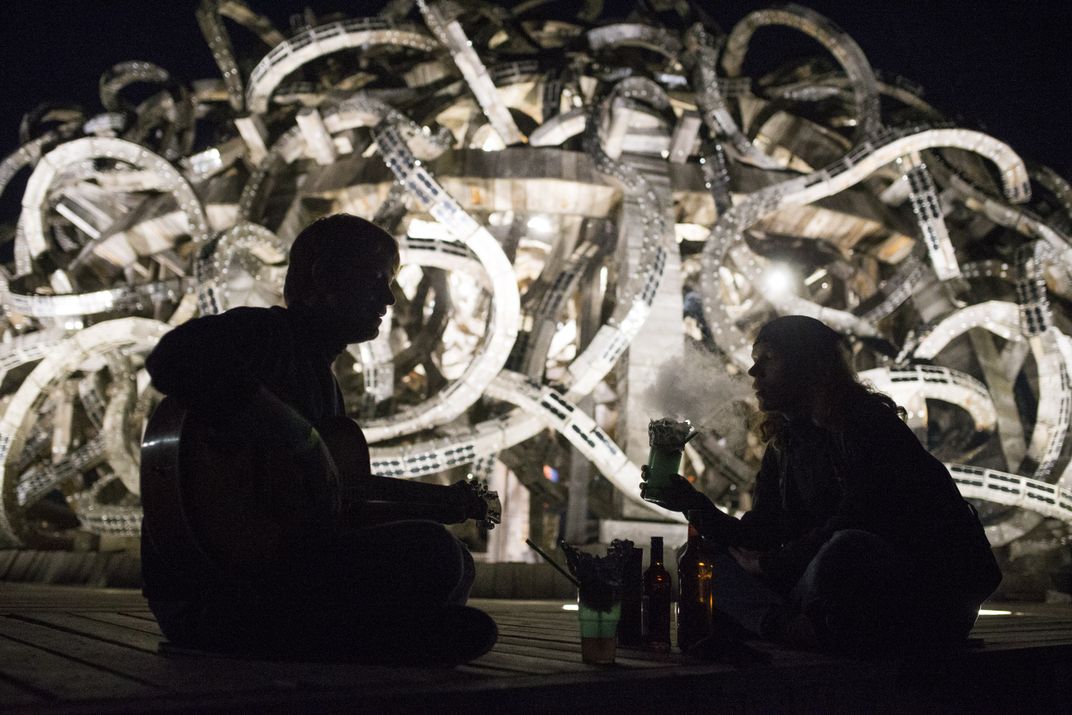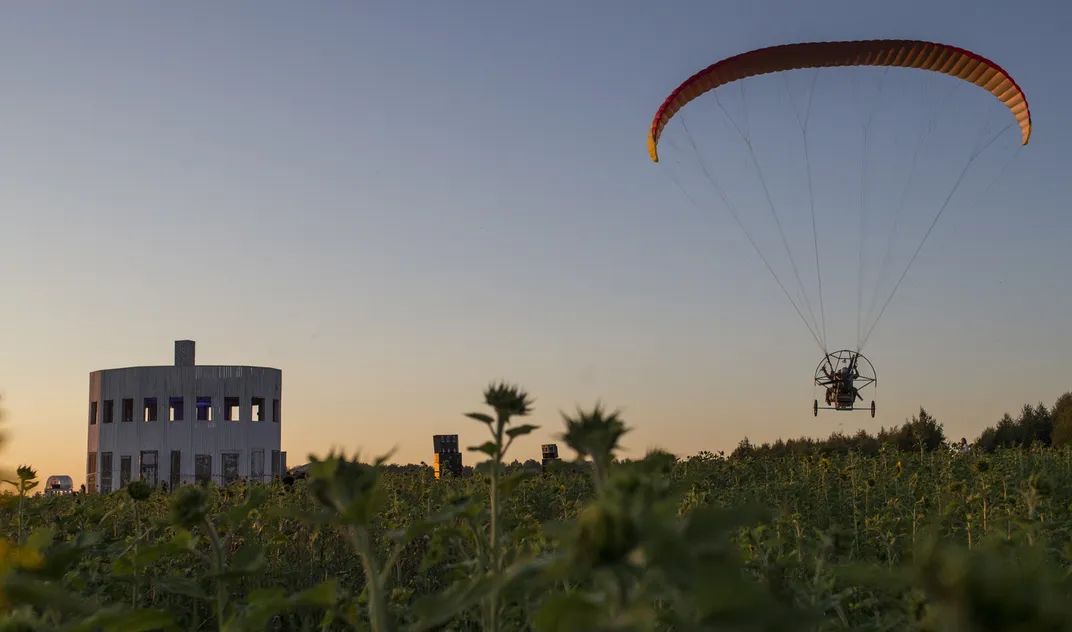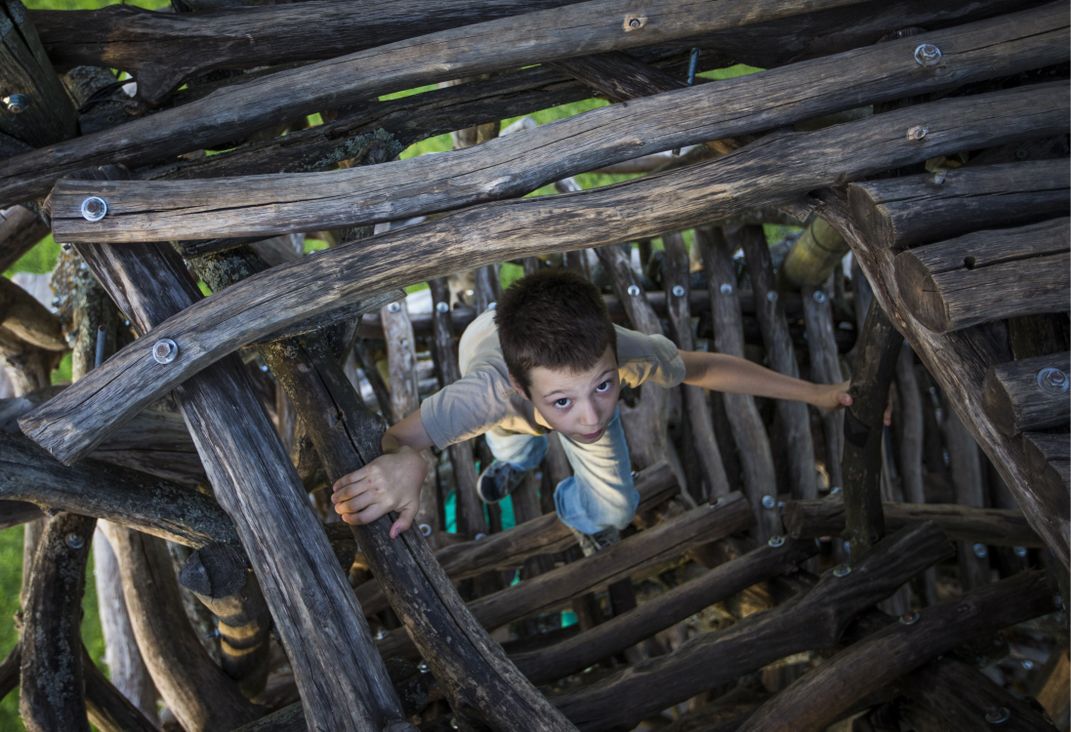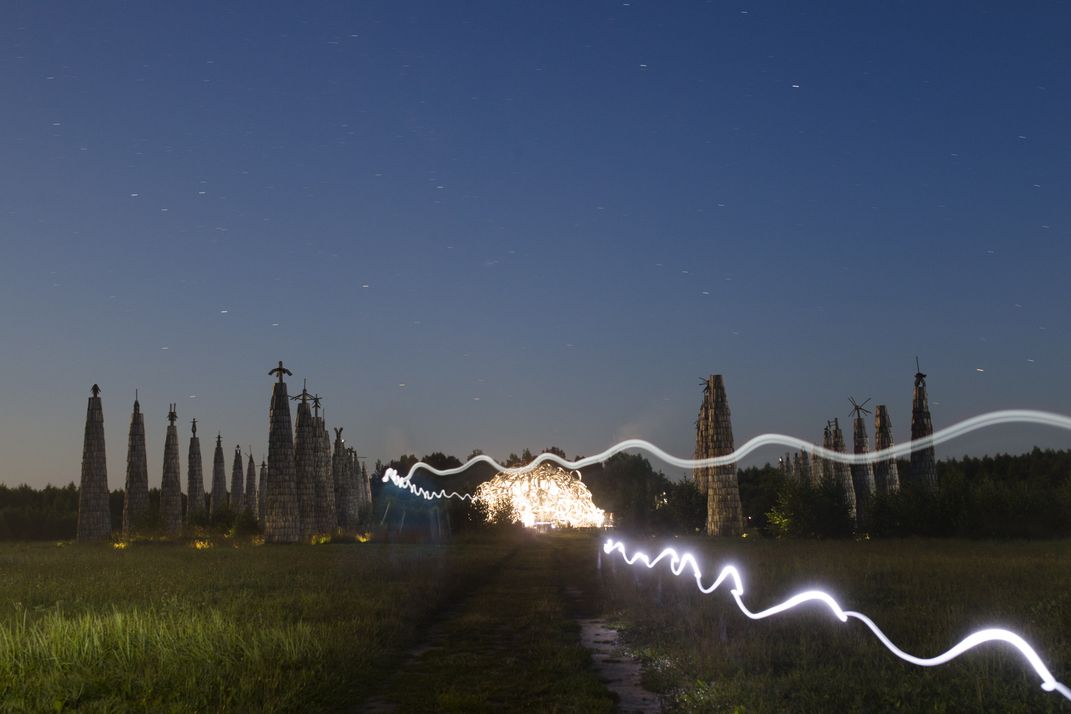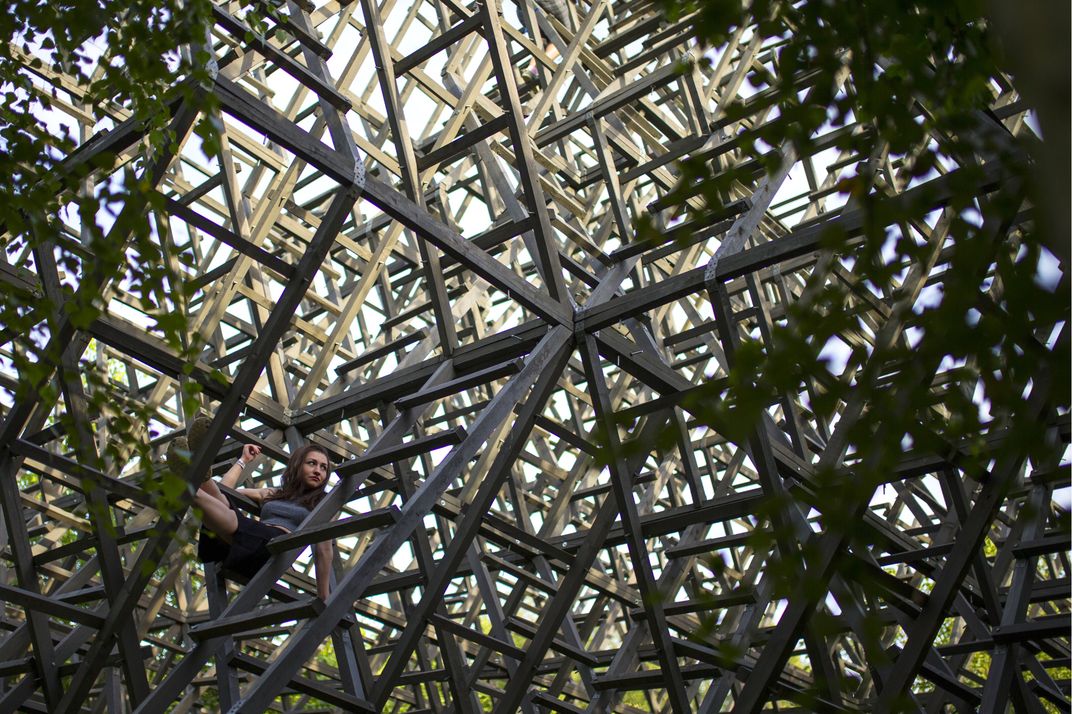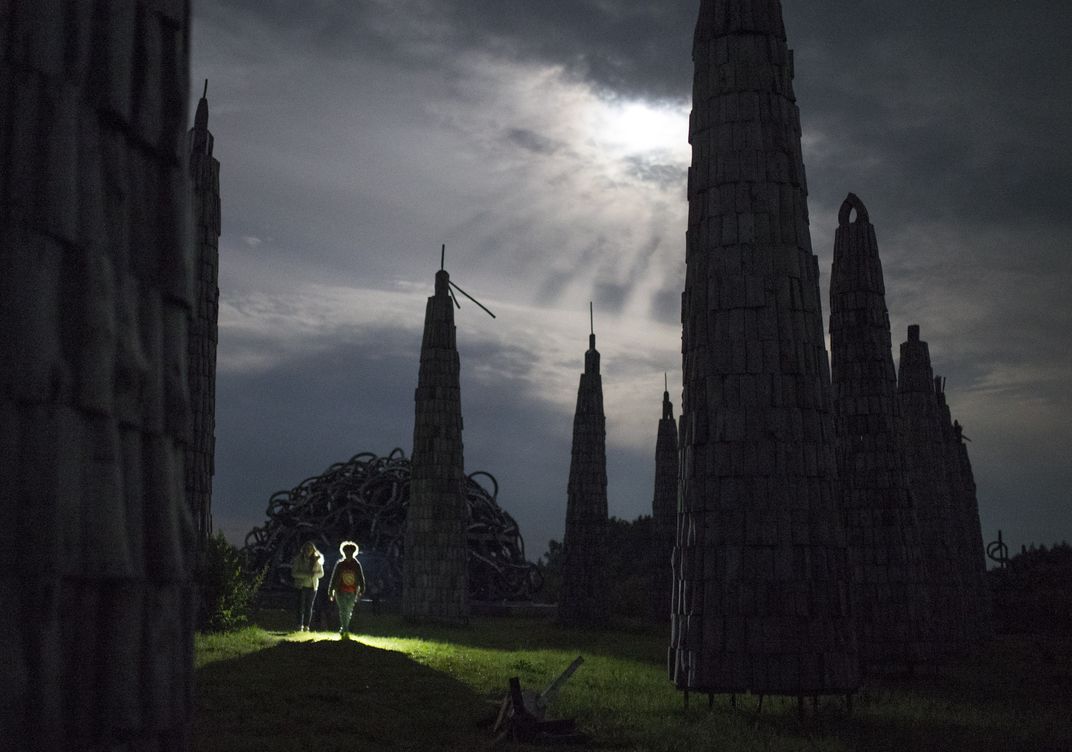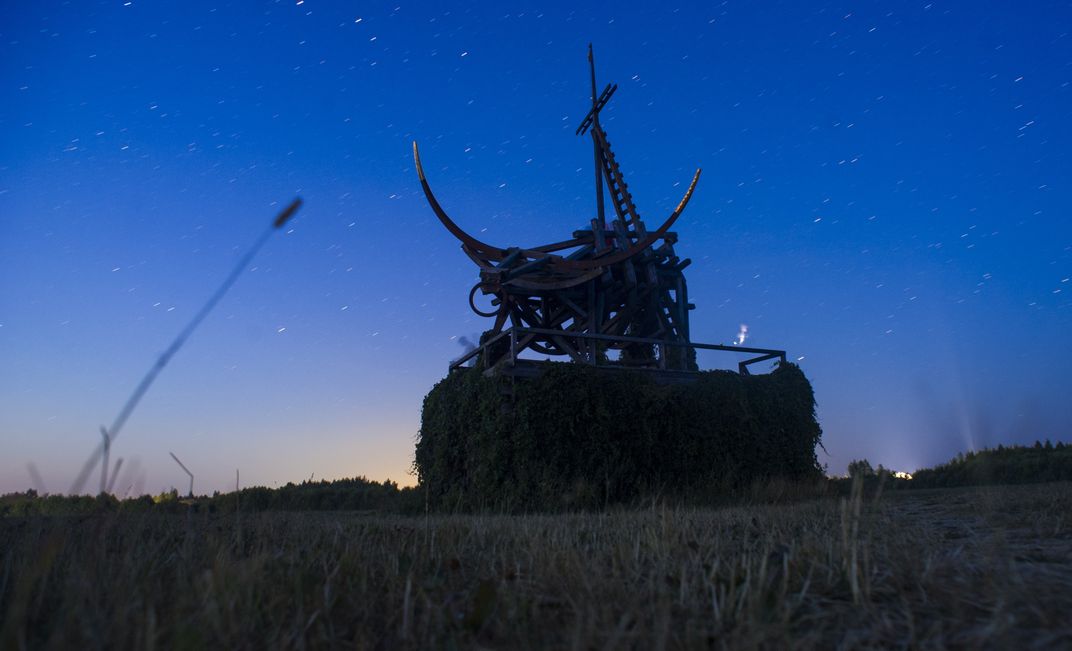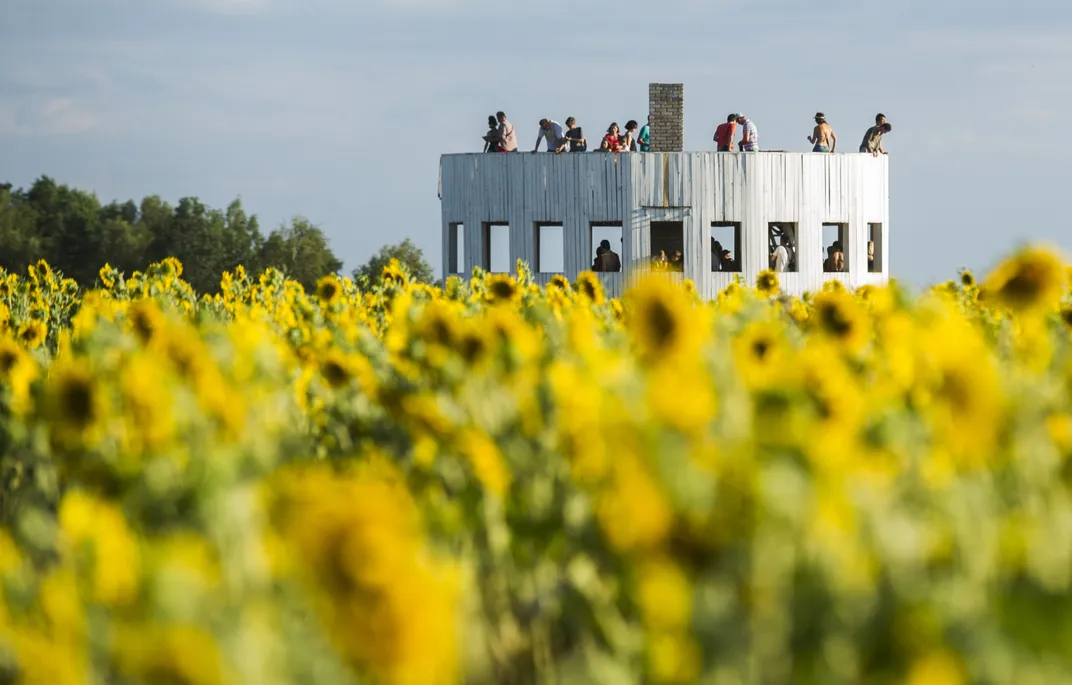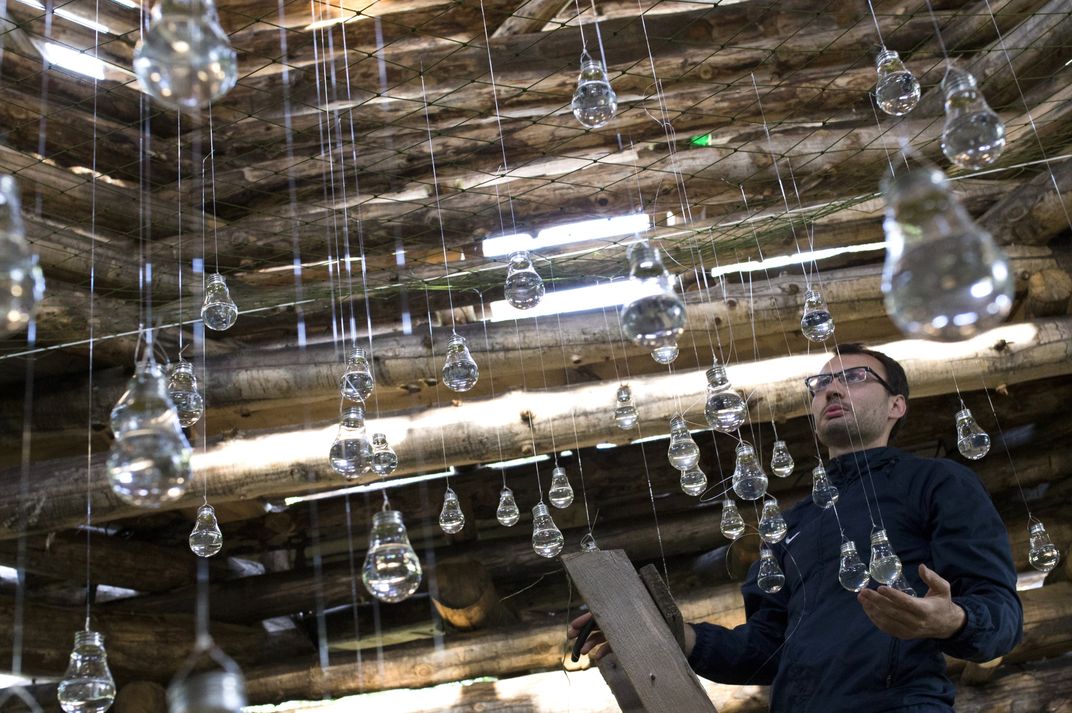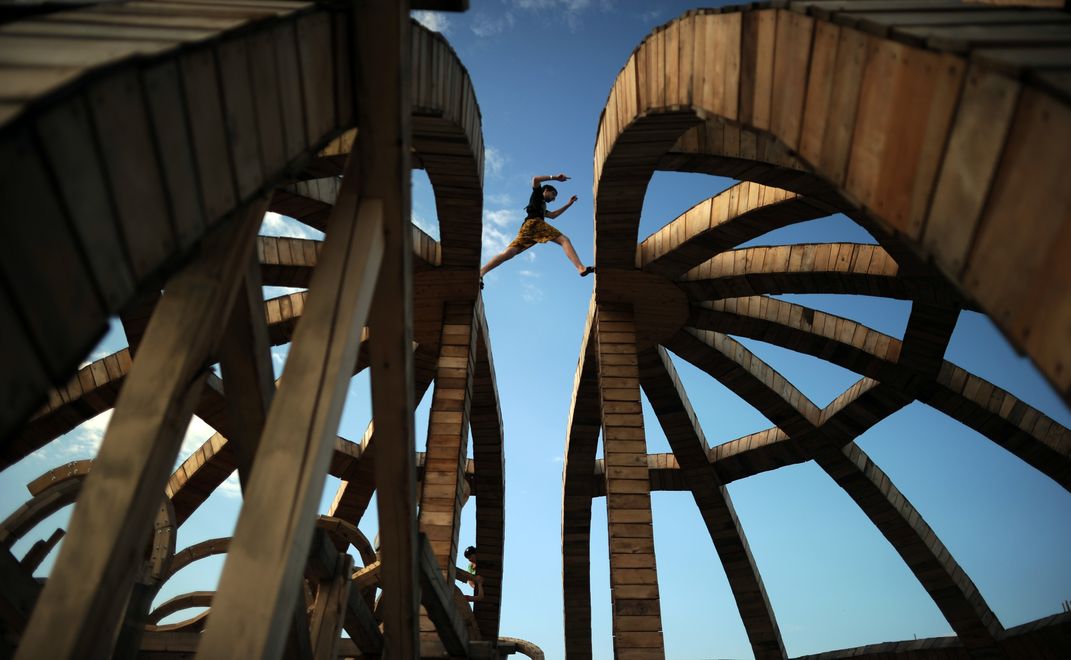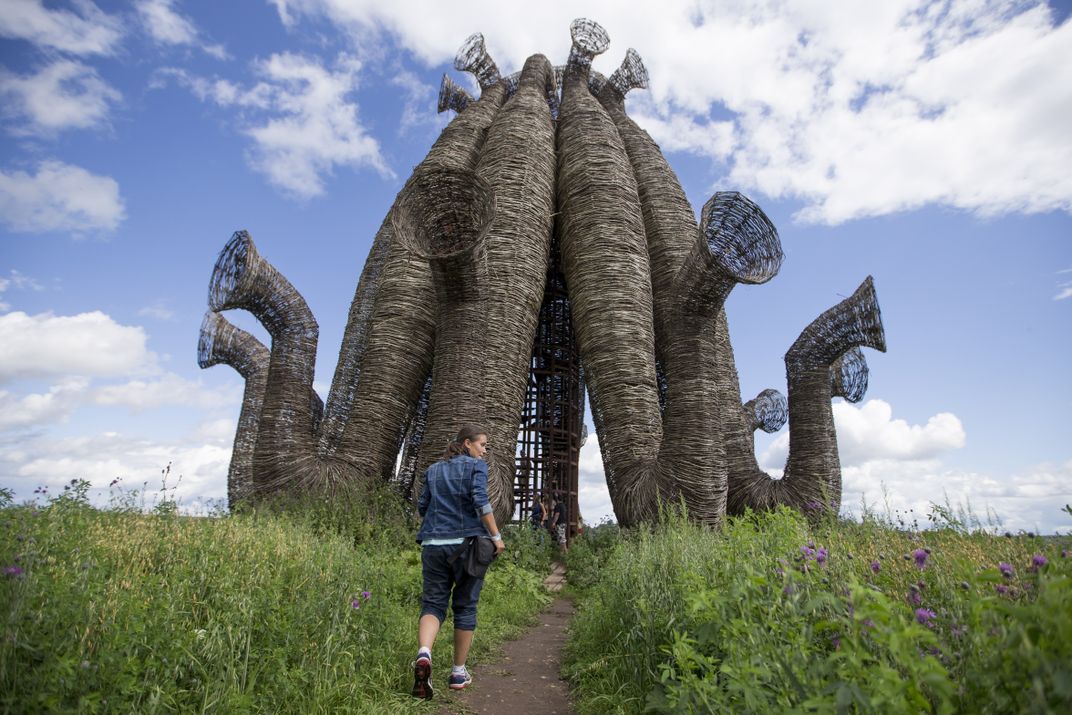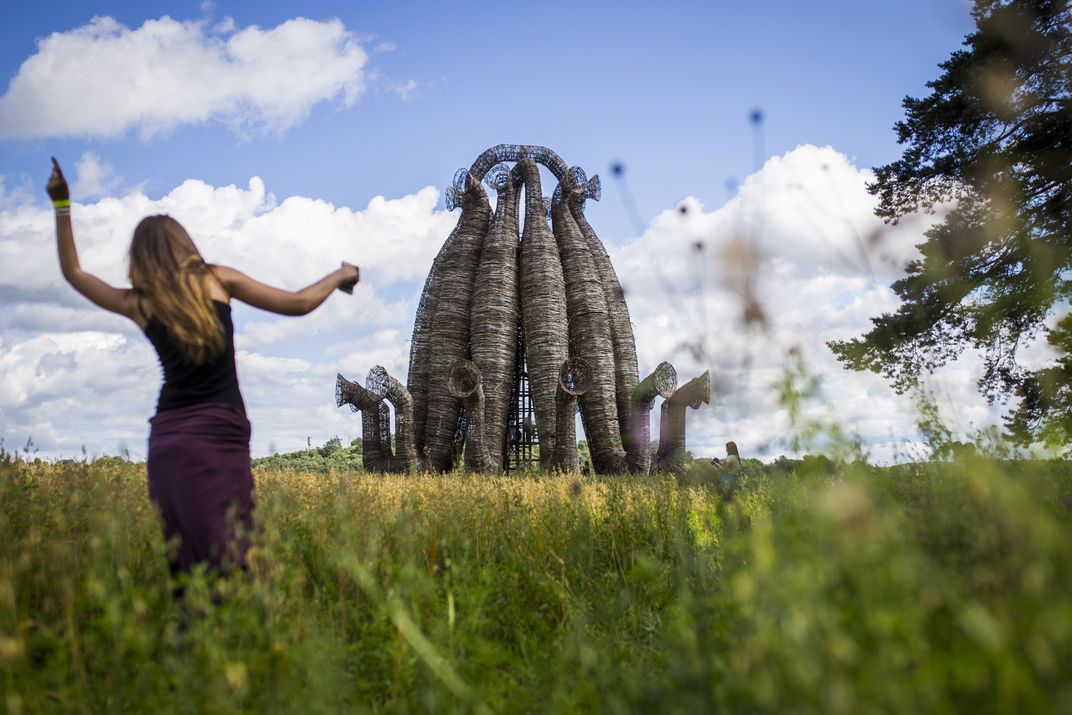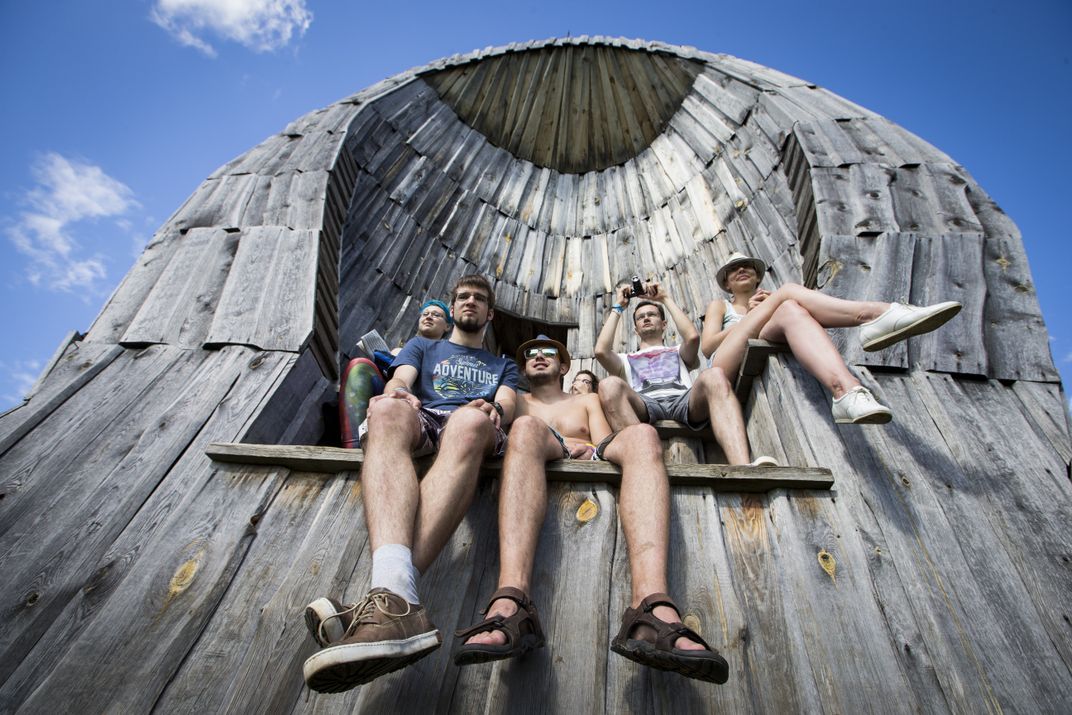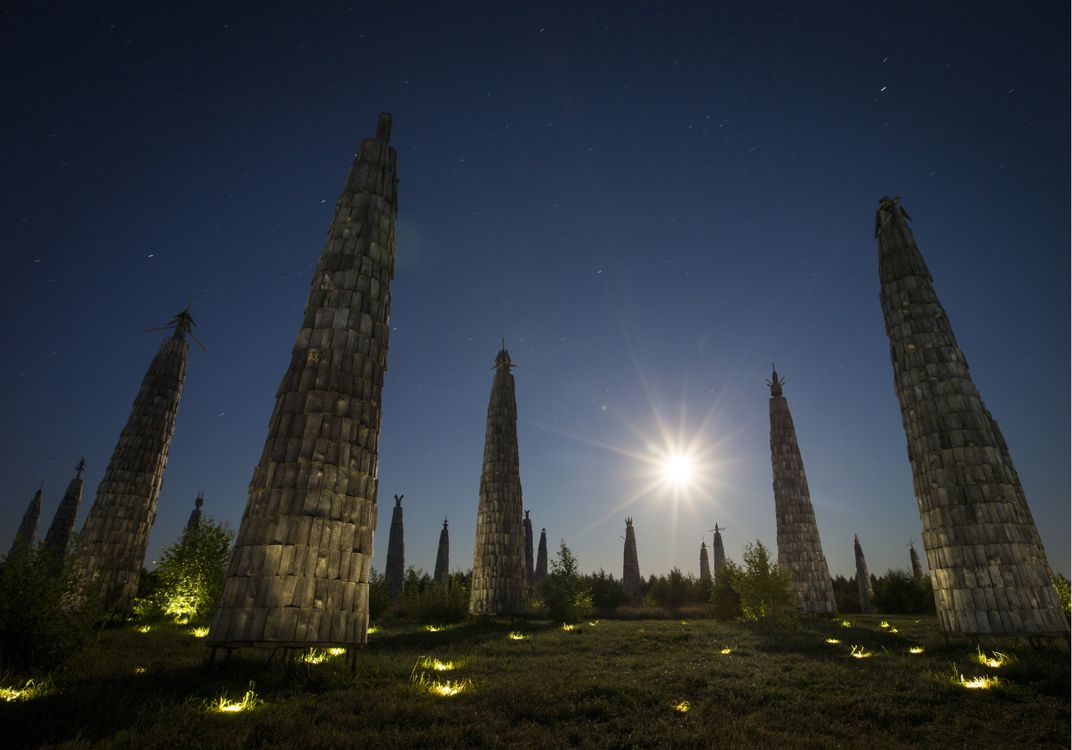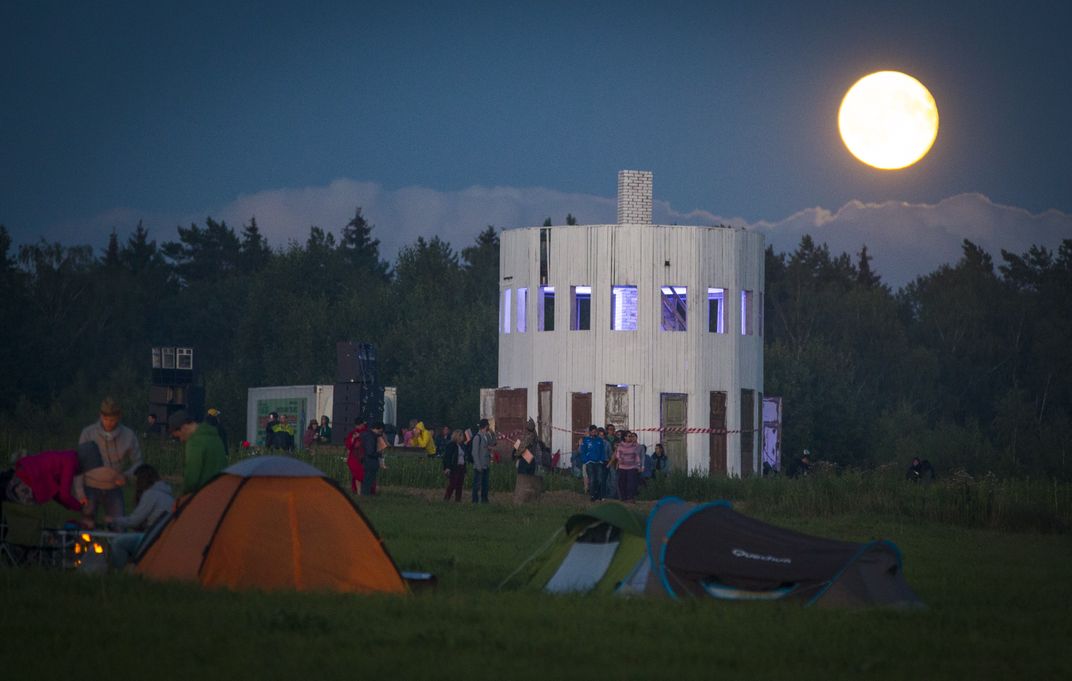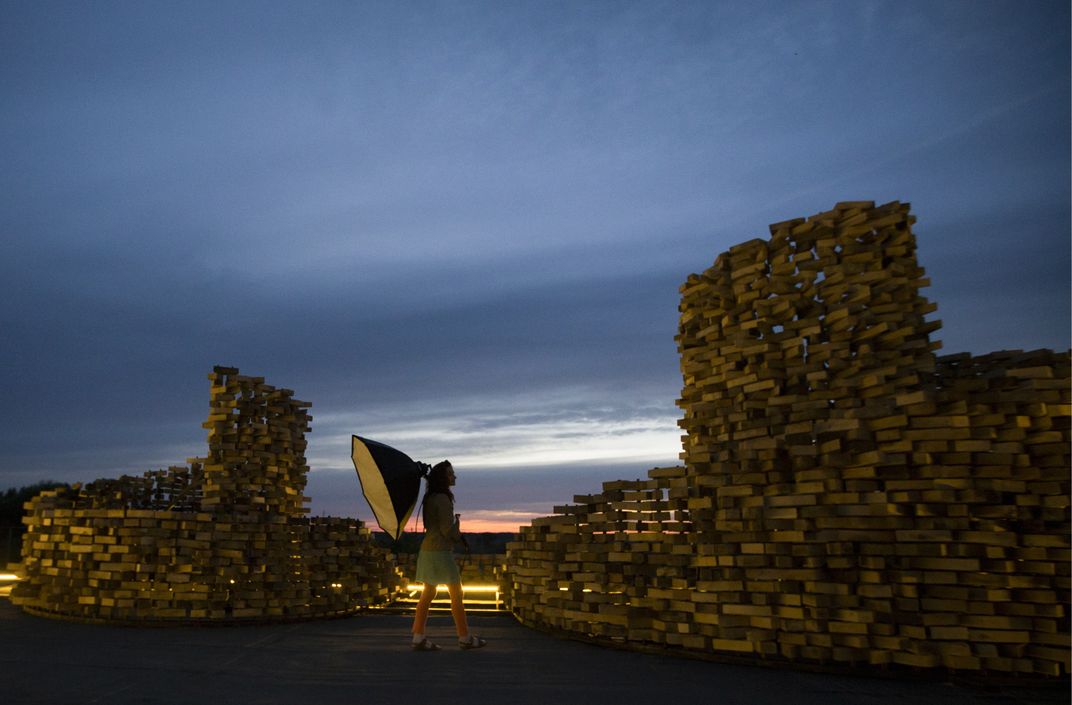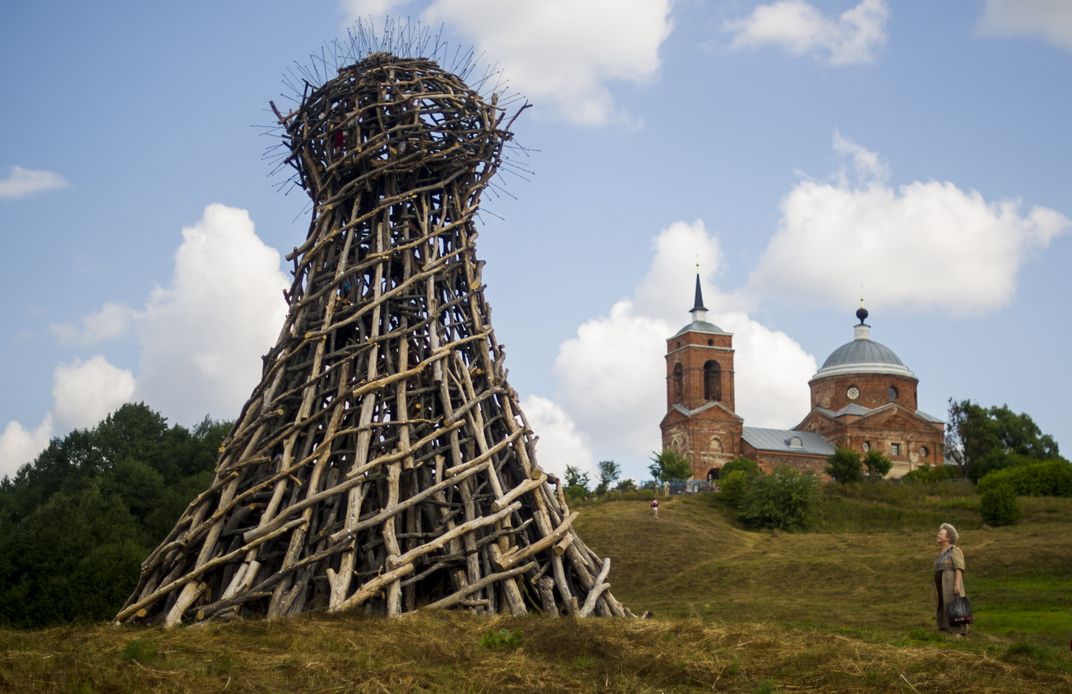At “Russia’s Burning Man,” Strange Structures Transform Villages
The beautiful, bizarre structures of the Archstoyanie festival are made of natural materials and help bring economic prosperity to small villages
About 125 miles southwest of Moscow, way out in the Russian countryside, giant, bizarre structures loom over the fields, farms and villages of the Kaluga region. Some are towers, some are buildings without roofs and some look a bit like pirate ships. All are made of natural materials such as wood, vegetation or soil. These massive, intimidating structures are not relics of a Soviet past, but artistic visions.
Since 2006, the Archstoyanie festival has invited visitors to this region along the Ugra River in late July for a weekend of music, art and gawking at the large, unique installations. The festival is reminiscent of America’s own summer art installation festival, Burning Man, not only for its sense of community and creativity (and its parties), but also because several structures are ceremoniously set ablaze at the end of the festival.
The festival is the brainchild of artist Nikolay Polissky. The 2015 incarnation was the festival's tenth, but Polissky began building his land art mecca more than a decade before that.
In 1989, the Soviet Union was teetering on the edge of collapse. It was in this political climate that Polissky and Russian architect Vasily Shchetinin left their homes in Moscow and happened upon Nikola-Lenivets, a small village over a hundred miles away. Polissky was impressed with the natural beauty of this rural community, but saw it was struggling. Jobs were scarce, and morale was low due to the collapse of collective farms (called “kolkhoz”) that were the backbone of Communist Russia. Polissky told the New York Times that vodka was so prevalent in the village, “everyone drank.” Polissky decided he was going to help put the villagers back to work.
In 2000, the artist paid villagers to help him create his first large-scale piece of land art in the fields of Nikola-Lenivets: An army of 220 snowmen, each one with unique features. He called the work Snegoviki (Russian for “snowmen”). It was such a hit that he repeated the project along the famed pedestrian-only Arbat avenue in historic downtown Moscow.
Over the next several years, Polissky and his workers produced other large-scale projects in the farms and fields of Nikola-Lenivets. For example, 2001’s Firewood Tower (constructed from firewood and made to look like a castle), 2002’s Media Tower (made from birch and alder twigs) and 2004’s Lighthouse on Ugra (a 50-foot lighthouse made out of elm tree branches that is still on display today).
In 2006, Polissky launched the Archstoyanie festival to attract other Russian artists, designers and architects to the region. The gathering became an artistic celebration unlike anything else in the country or the world. Over the years, Polissky and his team also garnered international recognition: Since 2000, they've built and exhibited their structures in European cities such as Venice, Paris and Luxembourg.
This year, organizers moved the main part of the festival to the nearby town of Zvizzhi to involve more of the surrounding communities. Over the last decade, Nikola-Lenivets has enjoyed thousands of visitors each year and the hope is to spread some of the wealth that tourism brings. As in Nikola-Lenivets, organizers have asked locals to get involved, and this time, they’ve encouraged artists to build structures and buildings that could be used in the villagers' daily life after the festival. For example, architect Alexey Kozyr built a bus stop and Polissky rebuilt a local store. 2015 was also the first year that the festival received money from the Russian government—about 200,000 rubles, or roughly $3,000 U.S.
Back in Nikola-Lenivets, 29 structures from Polissky’s first few years in the region, and earlier incarnations of the festival, purposefully remain standing. While the summer festival is the largest draw (approximately 6,000 attended this year), the art also attracts visitors year-round. Festival organizers told Smithsonian.com that during the course of 2014 over 40,000 people came to see Nikola-Lenivets and the surrounding artworks. The nature of the materials used to create the unusual structures provides an added draw: Weather, vegetation growth and animal activity all contribute to the ongoing evolution of the structures, which are changing much like the towns where they stand.
